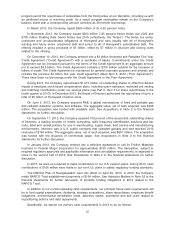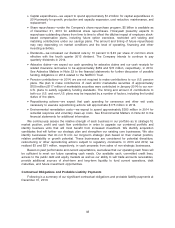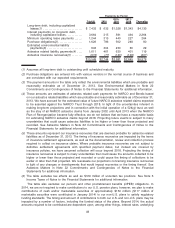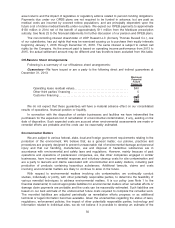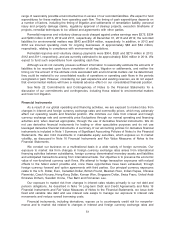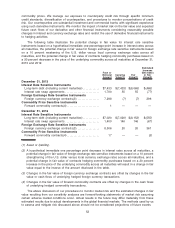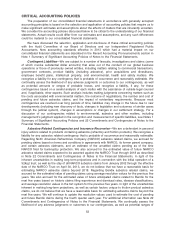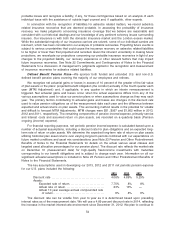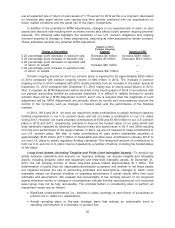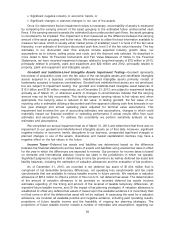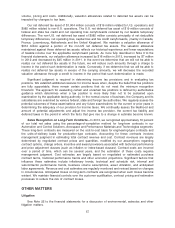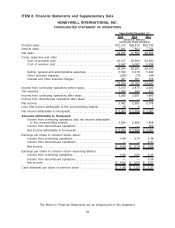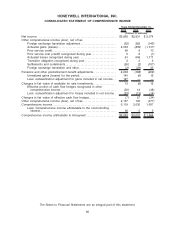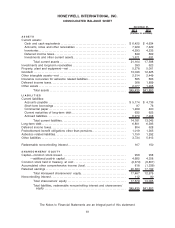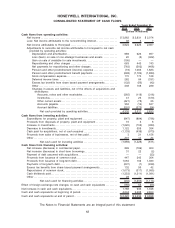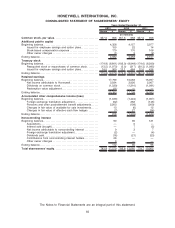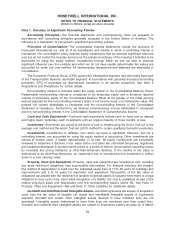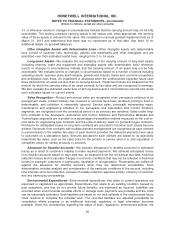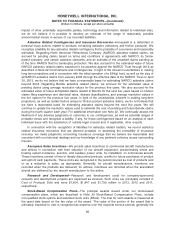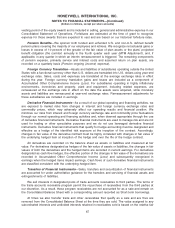Honeywell 2013 Annual Report Download - page 69
Download and view the complete annual report
Please find page 69 of the 2013 Honeywell annual report below. You can navigate through the pages in the report by either clicking on the pages listed below, or by using the keyword search tool below to find specific information within the annual report.volume, pricing and costs. Additionally, valuation allowances related to deferred tax assets can be
impacted by changes to tax laws.
Our net deferred tax asset of $1,004 million consists of $19 million related to U.S. operations and
$985 million related to non-U.S. operations. The U.S. net deferred tax asset of $19 million consists of
federal and state tax credit and net operating loss carryforwards reduced by net taxable temporary
differences. The non-U.S. net deferred tax asset of $985 million consists principally of net deductible
temporary differences, net operating loss, capital loss and tax credit carryforwards, (mainly in Canada,
France, Luxembourg, Netherlands and the United Kingdom). We maintain a valuation allowance of
$614 million against a portion of the non-US net deferred tax assets. The valuation allowance
maintained against these deferred tax assets reflects our historical experience and lower expectations
of taxable income over the applicable carryforward periods. As more fully described in Note 6 to the
financial statements, our valuation allowance increased by $16 million in 2013, increased by $7 million
in 2012 and decreased by $45 million in 2011. In the event we determine that we will not be able to
realize our net deferred tax assets in the future, we will reduce such amounts through a charge to
income in the period such determination is made. Conversely, if we determine that we will be able to
realize net deferred tax assets in excess of the carrying amounts, we will decrease the recorded
valuation allowance through a credit to income in the period that such determination is made.
Significant judgment is required in determining income tax provisions and in evaluating tax
positions. We establish additional reserves for income taxes when, despite the belief that tax positions
are fully supportable, there remain certain positions that do not meet the minimum recognition
threshold. The approach for evaluating certain and uncertain tax positions is defined by authoritative
guidance which determines when a tax position is more likely than not to be sustained upon
examination by the applicable taxing authority. In the normal course of business, the Company and its
subsidiaries are examined by various federal, state and foreign tax authorities. We regularly assess the
potential outcomes of these examinations and any future examinations for the current or prior years in
determining the adequacy of our provision for income taxes. We continually assess the likelihood and
amount of potential adjustments and adjust the income tax provision, the current tax liability and
deferred taxes in the period in which the facts that give rise to a change in estimate become known.
Sales Recognition on Long-Term Contracts—In 2013, we recognized approximately 16 percent
of our total net sales using the percentage-of-completion method for long-term contracts in our
Automation and Control Solutions, Aerospace and Performance Materials and Technologies segments.
These long-term contracts are measured on the cost-to-cost basis for engineering-type contracts and
the units-of-delivery basis for production-type contracts. Accounting for these contracts involves
management judgment in estimating total contract revenue and cost. Contract revenues are largely
determined by negotiated contract prices and quantities, modified by our assumptions regarding
contract options, change orders, incentive and award provisions associated with technical performance
and price adjustment clauses (such as inflation or index-based clauses). Contract costs are incurred
over a period of time, which can be several years, and the estimation of these costs requires
management judgment. Cost estimates are largely based on negotiated or estimated purchase
contract terms, historical performance trends and other economic projections. Significant factors that
influence these estimates include inflationary trends, technical and schedule risk, internal and
subcontractor performance trends, business volume assumptions, asset utilization, and anticipated
labor agreements. Revenue and cost estimates are regularly monitored and revised based on changes
in circumstances. Anticipated losses on long-term contracts are recognized when such losses become
evident. We maintain financial controls over the customer qualification, contract pricing and estimation
processes to reduce the risk of contract losses.
OTHER MATTERS
Litigation
See Note 22 to the financial statements for a discussion of environmental, asbestos and other
litigation matters.
57


